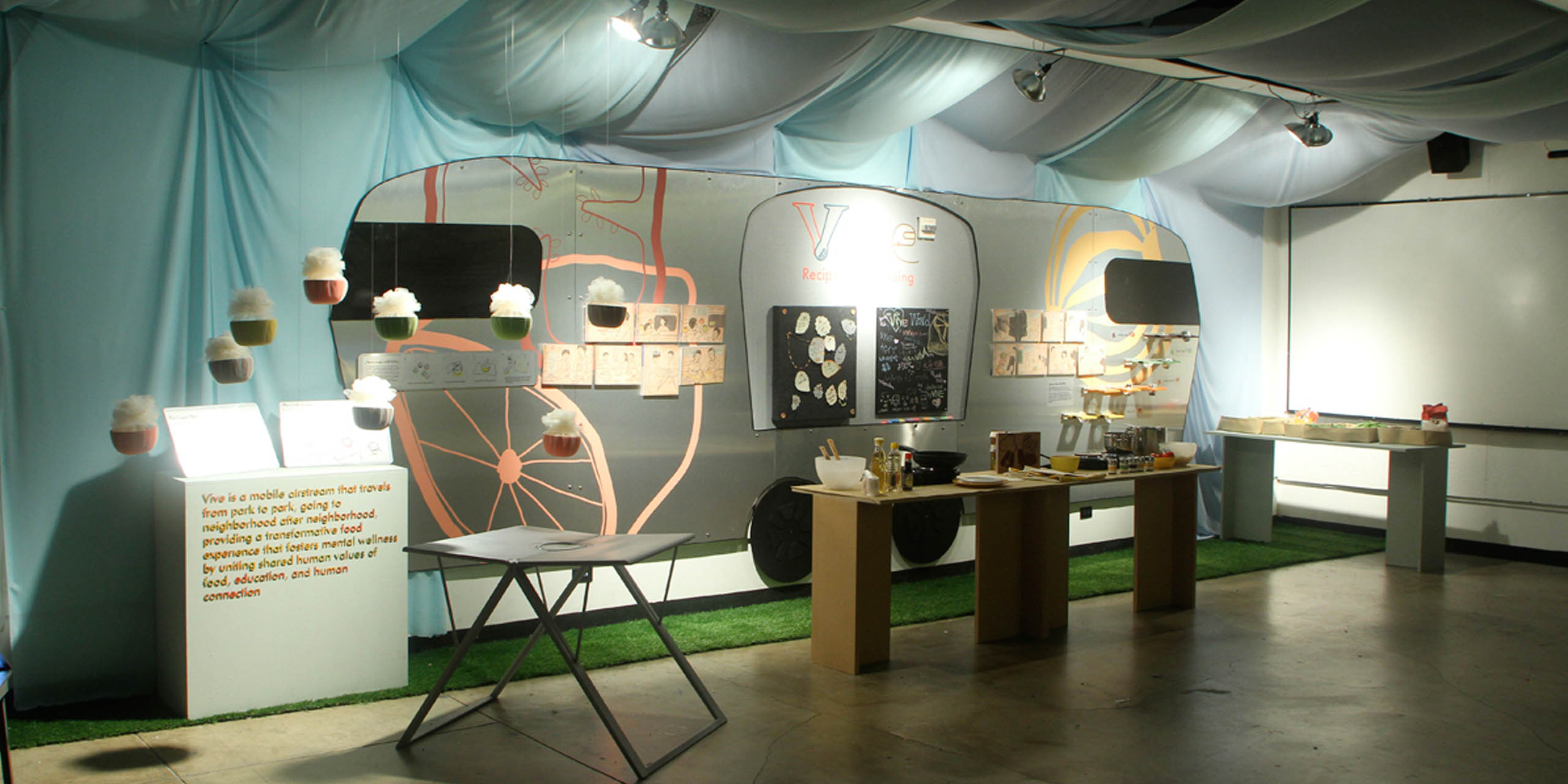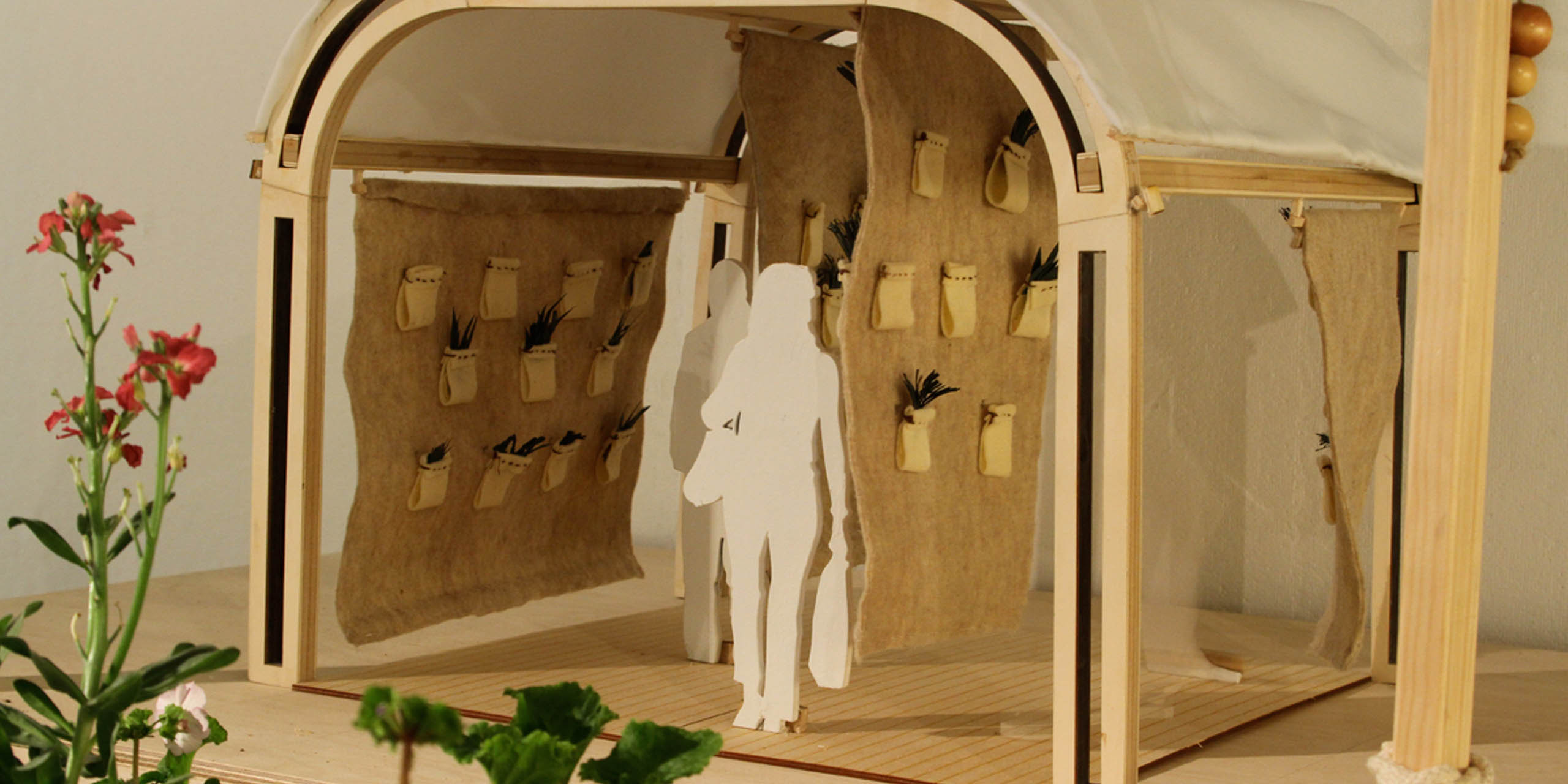Aging Desires: Designing for Transition
- Global Health

Fall 2010
A collaboration with Tama Art University/Pacific Rim 6
This Environmental Design-led studio developed visionary solutions to address the Graying of the Baby Boom Generation.
The collaboration between Art Center and Tokyo’s Tama Art University reaches back to the early 1980s, when a group of exchange students from Tama came to Art Center. The exchange of students continued over the years, and in 2006, the Pacific Rim joint project was launched. The project required design students of the two institutions to collaborate on research and practical work related to both global and local themes such as natural disasters, sustainability and workspace.
Aging Desires is the sixth international studio addressing the common problem of an aging society, and how to successfully respond to the needs and desires of an aging generation.
Over the next five years, one in every five Americans will be between the ages of 50 and 64. By 2030, these numbers will double to more than 71 million. This “graying” of the Baby Boom generation is inevitable. With each new year, Boomers—78 million children born the two decades after World War II—move closer to retirement age and toward numerous related health issues ranging from Alzheimer’s to proper nutrition.
In Japan, older people are now outnumbering children for the first time. There are 19.54 million Japanese over the age of 65, while those under 15 number just 19.49 million. While every industrialized country faces this problem, Japan’s situation is by far the most severe. Japan currently has fewer than half the workers per retiree that it had in 1997—a mere 2.5 people of working age for every pensioner. It is likely that in the early 21st century, Japan will have fewer than two people at work for every retiree.

Boomers have been famous for their desire to stay or at least act young. In our project we needed to explore what their future might hold.
— David Mocarski, Chair, Environmental Design
All of us at Keiro Senior HealthCare were honored to be included in this cross-cultural project. We were very impressed with the research that all the teams did. The students really “got it” in terms of the evolving needs of Boomers.
— Dianne Kujubu Belli, Keiro Senior HealthCare Chief Administrative Officer
Design Brief
 The goal for this transdisciplinary studio was to create design interventions focused on the realm of healthy aging. Students worked in teams to develop environments created to improve the quality of life for this aging generation in both Japan and the U.S. Examining a wide range of social issues, students envisioned solutions for healthy living, both at home and in assisted care living facilities, designing with an eye to the future.
The goal for this transdisciplinary studio was to create design interventions focused on the realm of healthy aging. Students worked in teams to develop environments created to improve the quality of life for this aging generation in both Japan and the U.S. Examining a wide range of social issues, students envisioned solutions for healthy living, both at home and in assisted care living facilities, designing with an eye to the future.
Research Process
Key to the design process was for students to spend time researching both cultures, addressing the different social and health issues involved, and being exposed to opportunities to conduct first-hand research with this population and forecast trends for healthy aging. Designmatters facilitated access for the teams to do field research and visit a spectrum of facilities, which included the Keiro Senior HealthCare Center, the largest non-profit healthcare organization serving the Japanese-American community in Southern California.
A Designmatters panel with experts from Keiro, the USC Davis School of Gerontology, and Vital Research, a leading consultancy that provides survey development and statistical analysis for aging, was key in anchoring the issues the class would tackle.
The panel discussion offered an overview about the wide range of social issues, desires, barriers and fears as we age and touched upon trends in the environmental gerontology and technological innovation in aging that will enable older adults to “add life to their years,” in the words of Dr. Aaron Hagedorn.
Outcomes:
Students set out to create innovative design solutions to improve the quality of life for this aging generation. The projects share a common aspiration to broaden older adults’ participation in the community and reach self-actualization at the end of life.
Student Projects
 close
close
Tekio
Read more
Tekio means “adapt.” The idea behind Tekio was that Boomers would be happier—and healthier—if they can age in the comfort of their own homes. With this in mind, the team created a modular, functional living space with minimal parts that could easily accommodate the aging process. Utilizing intuitive technology, they created a functional living space focusing on the various short-, mid- and long-term needs of its inhabitants.
 close
close
Vive
Read more
This team addressed American eating habits, and socialization in the Japanese culture. The response to both? A mobile organic food truck. The truck could provide the Boomers with healthy food, cooking classes, nutritional education, and a chance to socialize with others. Tables, tablecloths and other items would make the experience both fun and social for Boomers, while also helping them live healthy lives.
 close
close
Empowered Journey
Read more
Through research, this team learned that, unlike earlier generations, Boomers still have many personal aspirations beyond retirement. Therefore, the approach they took was to create an abstract, online gathering place, where dreams can still come true through a support network. Empowered Journey is a place that supports the rich and full lives of Baby Boomers and their families. Here they can do the various activities, like learning languages or taking yoga classes. It’s a workshop to learn, a place to create, a marketplace to sell, a place to gather and a place to think and aspire. The website creates a network of support, enabling users to stay connected to their community and the world despite whatever mental and physical challenges they might face.
 close
close
Hare
Read more
Hare is a general gardening environment created just for Baby Boomers, providing activities such as gardening classes and a farmer’s market. The goal was to create a viable community celebrating healthy aging and quality of life. Students transformed a vacant building into the garden center, creating a regular farmer’s market as well numerous gardening-related products and tools. Tools were designed in an ergonomic form, featuring T-shaped handles and straight angles, conducive to the aging gardener. Classes and workshops on gardening were developed to foster both activity and socializing opportunities. Hare, which means “a special day” in Japanese, also has a website connecting both U.S. and Japanese generations and cultures, offering products and gardening tips and ultimately instilling in users a sense of accomplishment. The group felt gardening together, both physically and online, could create an atmosphere of compassion and understanding in an innovative way.
We learned so much about a very complex dilemma. Students delivered four completely different attitudes and directions as to how they might approach it as designers. It was fascinating seeing what came from this collaboration.
— James Meraz, Associate Professor, Environmental Design
The result of the students’ work was powerful. They leveraged the strengths of both cultures to create sensitive yet practical solutions that would undeniably make our world a better place to age.
— Robert Ball, Environmental Design